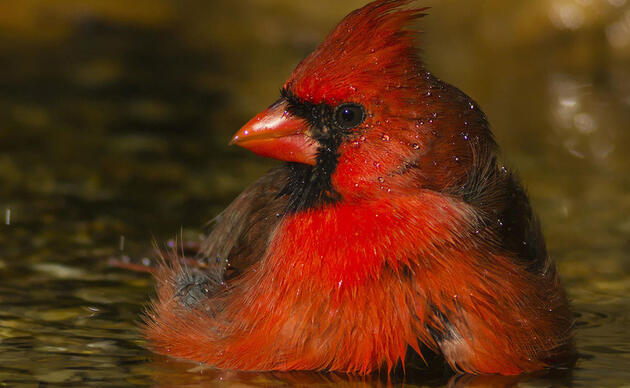Update September 6, 2023: K62 was released this week from the Wildlife Center of Virginia after months of rehabilitation.
"We were thrilled to return K62 back to the wild," says Amanda Nicholson, senior vice president of the Wildlife Center of Virginia. "She’s had quite an adventure in her first year of life! It was amazing to learn about her backstory with the rescue and rehabilitation at the Audubon Center for Birds of Prey. I think it speaks to how incredible banding and tracking rehabilitated patients can be, and how much of a window that band has given us into this young bird’s life. It always takes a village to help wildlife, and we’re thankful for our colleagues in Florida, all of this bird’s rescuers and transporters, and of course, all of our supporters who help us do what we do every day!"
Audubon Florida staff received a 2023 banded resight report!
K62 arrived at the Center on March 1 after volunteers rescued her from the ground below her nest in Leesburg (she was not yet able to fly). Once flying, she was released near an active nest with young of a similar age in Pasco County on March 25. Since then, she has clearly been busy! Marina Pierce, a photographer, observed K62 in the Cape Charles, Virginia area from April 10 through 15. In the above photo, the eagle is atop a whale carcass that had washed ashore.
Center for Birds of Prey volunteer Maggie Haynes saw Pierce’s photos of a banded eagle on Facebook, where she follows several wildlife rehabilitators and raptor enthusiasts. "It's one of the things I enjoy about social media: learning," says Haynes. She put Pierce in contact with staff at the Center, who identified the young eagle as K62, which they released on March 25.
As part of a long-term cooperative study through the Audubon Center for Birds of Prey, all rescued Bald Eagle fledglings treated by its Raptor Trauma Clinic receive a colored auxiliary leg band before release. The color designates the type of nest they came from: green bands for natural nests and black bands for nests on man-made structures. Audubon’s goal is to learn if the type of nest structure an eagle hatches in influences the type of nest structure it chooses as a breeding adult. This information will also help in future management and protections for Bald Eagles in Florida.
Since 2017, Audubon has banded and released 90 fledgling Bald Eagles as part of this ongoing study. Each eagle that is rescued and released gets a second chance at life and the opportunity to contribute to the future of the wild population.
“Banding resights like this one brings us one step closer to understanding Bald Eagle nesting habits,” says Shawnlei Breeding, EagleWatch program manager. “We depend on community scientists to help us track these majestic birds.”
On April 19, the eagle was found alive but motionless on the beach. She is now in the care of the Wildlife Center of Virginia. While it is not the type of update we hope for, it is a sobering reminder of the challenges eagles face, particularly during their first year of life as they migrate. It is thanks to the science of bird banding that we are able to follow along this eagle's journey.
Thank you to all who were involved in the rescue, treatment, and release of Bald Eagle K62, as well as Marina Pierce for photographing the band.
Have you spotted a banded Bald Eagle? Make note of the band color, alphanumeric code if visible, and which leg the band is on and report this important information to the U.S.G.S. Bird Banding lab. This data helps researchers track longevity, migratory habits, habitat usage, and other vital population parameters.
By Audubon Staff
Stay in Touch!
Show your love of birds today. Subscribe to receive email updates about Audubon's conservation work and hear about opportunities to help birds in your area or nationwide.




